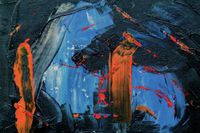Photographer Larry Fink, Known for Capturing Class Divides, Passes Away at 82
American photographer Larry Fink, who documented class divides in New York's social circles, has died at the age of 82. Fink gained recognition for his series 'Social Graces' in the late 1970s, which juxtaposed images of the rural working-class and the social elite. Throughout his career, Fink's work showcased his political and aesthetic influences, and he delved into various subjects including the Beat movement, Andy Warhol's circle, sports, and entertainment. Fink's unique approach in capturing unstaged scenes set him apart as a photographer.

Photographer Larry Fink Passes Away at 82
Larry Fink, an American photographer who captured class divides by documenting upper echelons of New York’s social circles, died at the age of 82 at his home in Pennsylvania. New York’s Robert Mann Gallery, which represented him, announced his death over the weekend, but did not specify a cause of death.
Fink gained wide exposure in the late 1970s after publishing his series 'Social Graces.' In these images, Fink pitted two worlds against one another, picturing both the Sabatines, a family in the rural town of Martin’s Creek in eastern Pennsylvania, where he was based, and the social elite who populated different cities. Works from the series were exhibited at the Museum of Modern Art in New York in a 1979 solo exhibition; Aperture published a monograph that featured them several years later.
A Career Influenced by Politics and Aesthetics
Born in Brooklyn in 1941, Fink was raised by his Bernard Fink, a lawyer, and Sylvia Caplan Fink, a left-leaning activist. He took up image-making in his early adolescence, eventually becoming a mentee of Lisette Model, the Austrian-born American street photographer, while he was studying at the New School in New York.
During his six-decade long career, he repeatedly out Model’s mark on his work while also crediting as the views of his Marxist mother with influencing his art. In 2011, Fink told the New York Times, “That set of contradictions embellished my politics and aesthetics. The work was meant to be political, not polemical. It turned out to be not necessarily kind, but certainly honest. And not cruel.”
Exploring Various Subjects and Styles
By 1958, when he was 18, Fink had quit school and found a job photographing a group of artists and writers associated with the Beat movement, traveling from New York, to Texas, Ohio and Mexico to record their adventures in each state. Fink later returned to New York and, during the mid-’60s, captured candid moments of Andy Warhol’s inner circle.
By 1976, Fink had developed his signature style, shooting high-contrast black and white images with a flash that caused his subjects to appear alienated. The experiences earned him recognition, gaining him a Guggenheim Fellowship. Two years later, he met and befriended Robert Mann, a New York photography dealer, who started representing Fink officially in 2021.
A Distinctive and Unapologetic Approach
Reflecting on Fink’s distinctive approach, Mann outlined how the photographer was unapologetically assertive in his pursuit of images. According to the gallerist, Fink had a unique tact for capturing unstaged scenes. “The energy and style he brought to the photography medium are unparalleled. I’ve never seen someone else execute it quite like that,” Mann said. 'He operated as a free agent in every respect.'
Fink is survived by his partner, Martha Posner, and his daughter Molly Snyder-Fink from his first marriage to painter Joan Snyder.



